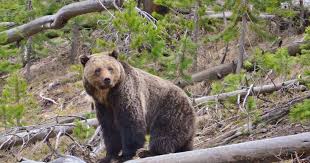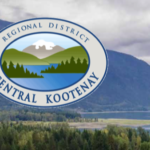OP/ED: BC's Explanations for Harmful Changes to Grizzly Bear Management Misleading
The Valhalla Wilderness Society (VWS) says the BC government is not being up front with the public about a major intended change to grizzly bear management. The proposed change is revealed in a draft Grizzly Bear Stewardship Framework that is currently under public review. Over fifty-five environmental groups and conservationists have signed an open letter to government severely criticising the Framework.
“The government is saying that the Stewardship Framework is just an ordinary management plan, but that is not true,” says Craig Pettitt, Chair of the Valhalla Wilderness Society. “It is a package of information about grizzly bears intended for use by local and regional wildlife advisory committees that the government is setting up to create and recommend their own separate grizzly bear management plans. No information about the terms of reference, location and members of these committees has been released.”
Under the Stewardship Framework, hunting, industrial and political interests would be on the committees. Reopening the ban on grizzly bear trophy hunting will be on the table for these committees to decide, and environmental groups on the committees would almost certainly be outvoted. The Stewardship Framework contains no conservation objectives specifically for grizzly bears, a species at risk.
MOF says that the committees are needed because First Nations have different ideas about how to manage the bears. “One size doesn’t fit all”, the Stewardship report says.
“Grizzly bear populations certainly have differences, but that is no excuse why they should be subjected to the wishes of a bunch of different committees.” says bear biologist Wayne McCrory, a director of VWS. “The province already has a system for taking into account the regional differences of grizzly bear populations. However, grizzly bears all share common needs, so they need a central, unified management plan. Under the Species at Risk Act they should have had one three years ago, but the province has been derelict in providing it.”
“The three most important things grizzly bears need right now are much more habitat protection, better control of people’s garbage and other attractants, and resource road closures in areas of abundant grizzly bear foods,” says McCrory. “The draft Grizzly Bear Stewardship Framework does not commit to any of this.”
“The chief difference between current grizzly bear management and the draft Stewardship Framework is that now management recommendations are made by professional biologists hired by the government to serve the broad public interest and exercise professional ethics. In contrast, the local and regional committees proposed by the government would open the door to heavy influence by private interests concerned only with their own profits, whether from guide-outfitting grizzly bear trophy hunters or logging and roading grizzly habitat.”
“The government admits that it has already consulted with 85 Indigenous governments and groups, and has set up a provincial level Ministers’ Wildlife Advisory Council,” says Pettitt. “Why isn’t that enough? Instead we’re seeing a set-up to overturn the ban on the licensed grizzly bear hunt through numerous local committees.”
It’s true that some First Nations want to do guide-outfitting for grizzly bear trophy hunters, while others oppose killing the bears. But First Nations already have the Constitutional right to hunt grizzlies for food and ceremonial purposes, and they don’t even have to keep a record of how many they kill. Opening the hunt for monetized killing of grizzly bears is a step too far for an at-risk species.

























Comments